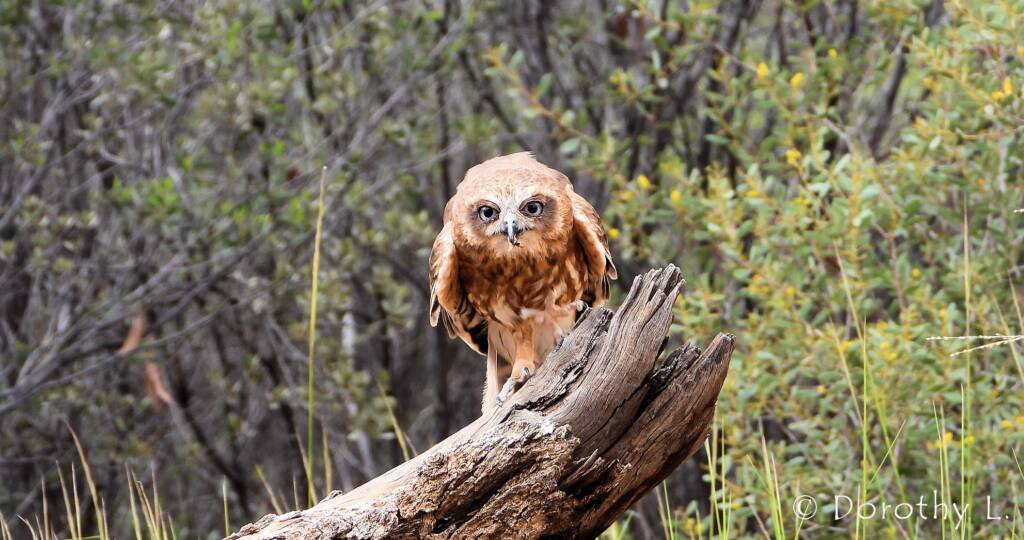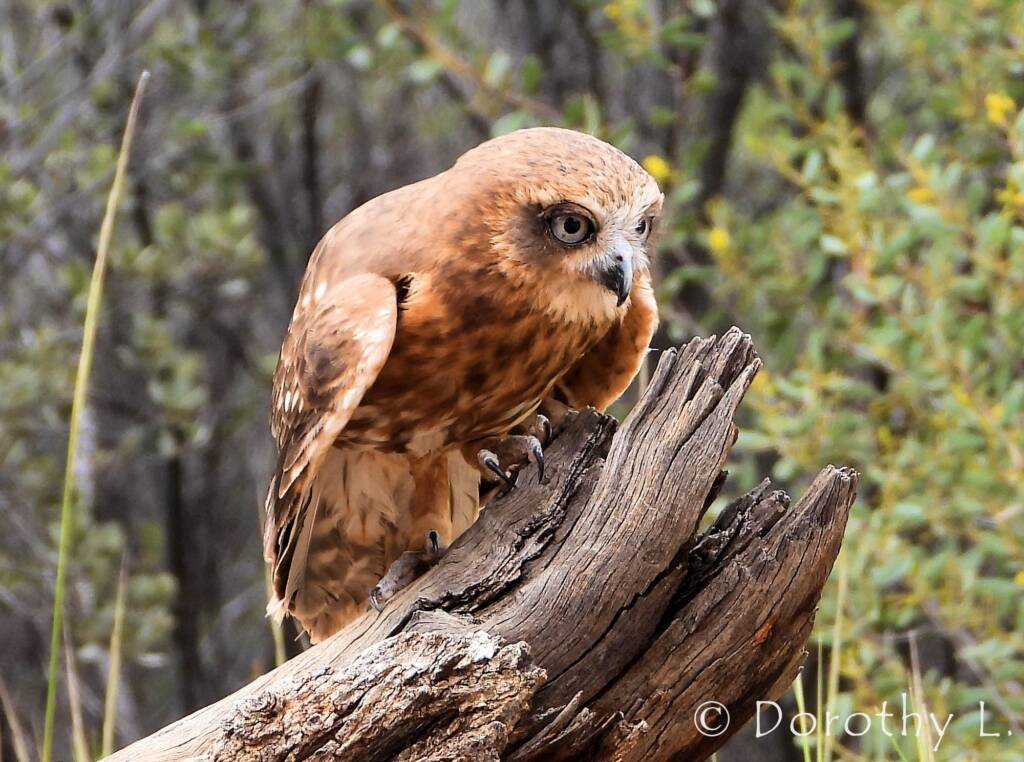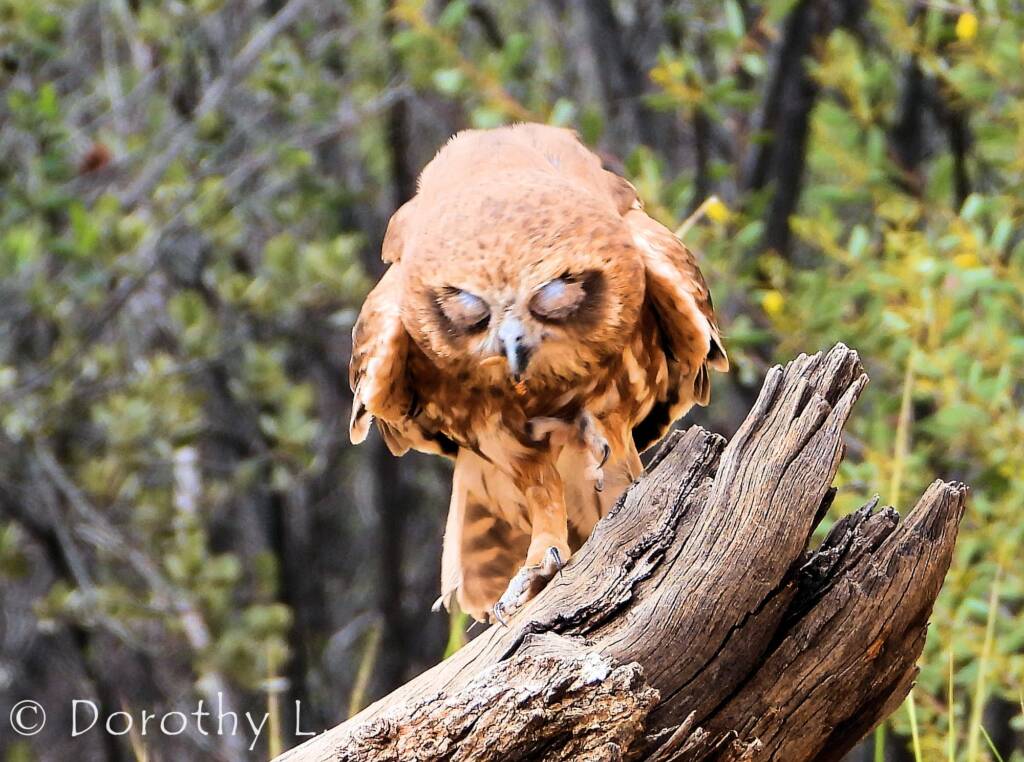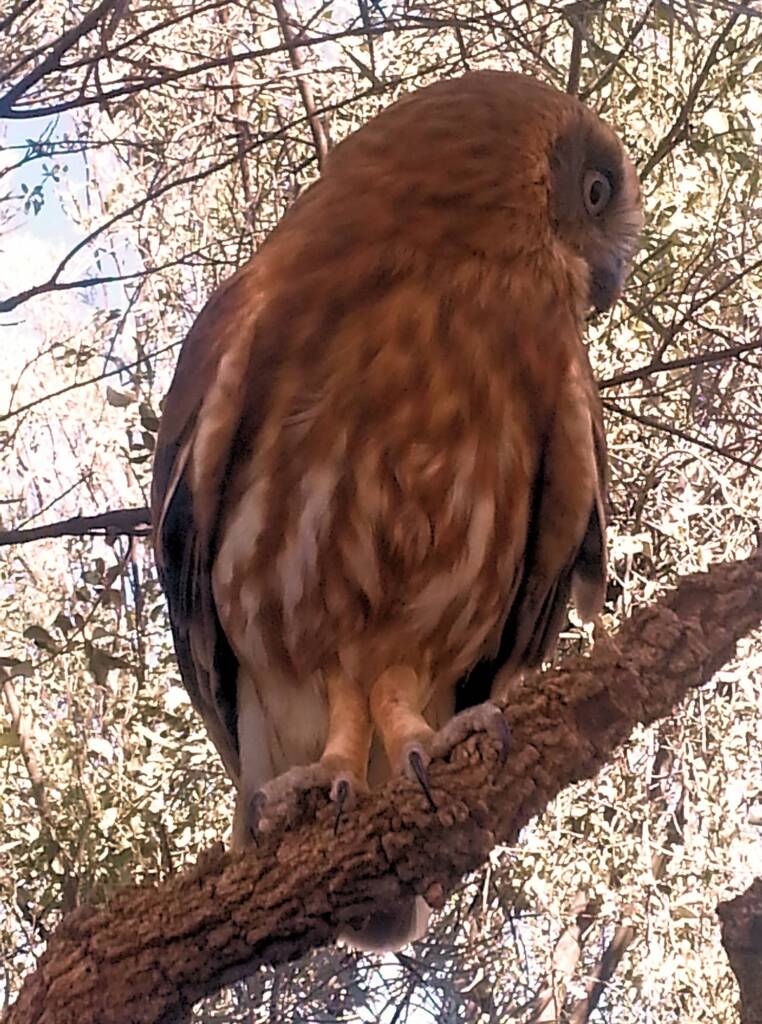Birds of Prey
RaptorsAustralian Boobook Owl Australian Hobby Barn Owl Black-breasted Buzzard Black Falcon Black Kite Black-shouldered Kite Brown Falcon Brown Goshawk Nankeen Kestrel Peregrine Falcon Spotted Harrier Wedge-tailed Eagle Whistling Kite
The smallest of Australian owls, the Southern Boobook is a nocturnal raptor (bird of prey), that eat insects and small mammals. They feed mainly at night, although they have been observed on overcast days in the early morning and late afternoon.
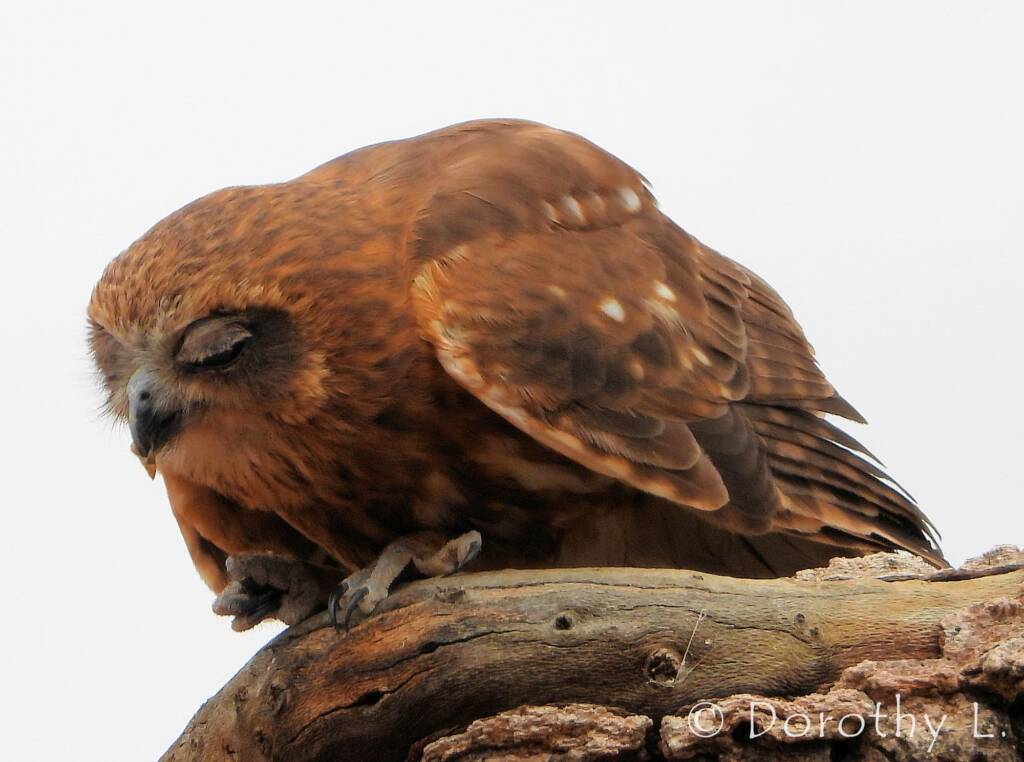
They are part of the genus Ninox , known as the ‘hawk owl’ group of owls due to the ‘hawk like’ appearance/shape of their face and beak. This is different to the genus Tyto who are a group of owls that have ‘heart like shaped’ faces, such as the Barn Owl, Grass Owl, Sooty and Masked Owl.
Commonly known as the Southern Boobook, the name was changed to Australian Boobook (Ninox boobook) by the Committee of Representatives and International Ornithological Congress (IOU), formerly known as the International Ornithological Committee.
Also known as the ‘mopoke’, due to its distinctive call it makes that sounds like ‘mo-poke’, the name boobook come from the Eora Aboriginal people of the Sydney region. The Australian Boobook can often be heard at night, making their distinctive ‘boo-book’ or ‘mo-poke’ call. They are often observed perched on an open branch up in the tree-tops.
They have a dark chocolate-brown above and rufous-brown below plumage, that is heavily streaked and spotted with white, although their overall colour can be variable. Their bill has a dark to black tip, with a pale grey base and cere. The feet are a grey to pinkish brown, or yellow in colour and they have dark grey to blackish claws. Their facial disc is a chocolate brown and the eyes are large and can vary from white, grey-green, green-yellow to a light yellow.
The young Australian boobooks are usually paler in colour than the adults, attaining adult plumage around the third or fourth year. The juveniles in their first year have whitish underparts and foreneck, a large prominent pale eyebrow and larger whitish spots on their upperparts. Their feather tips are white and fluffy (that are remnants of the nestlings’ down). In their second and third year, the immature birds have plumage more like the adults, although their crowns are paler and more heavily streaked.
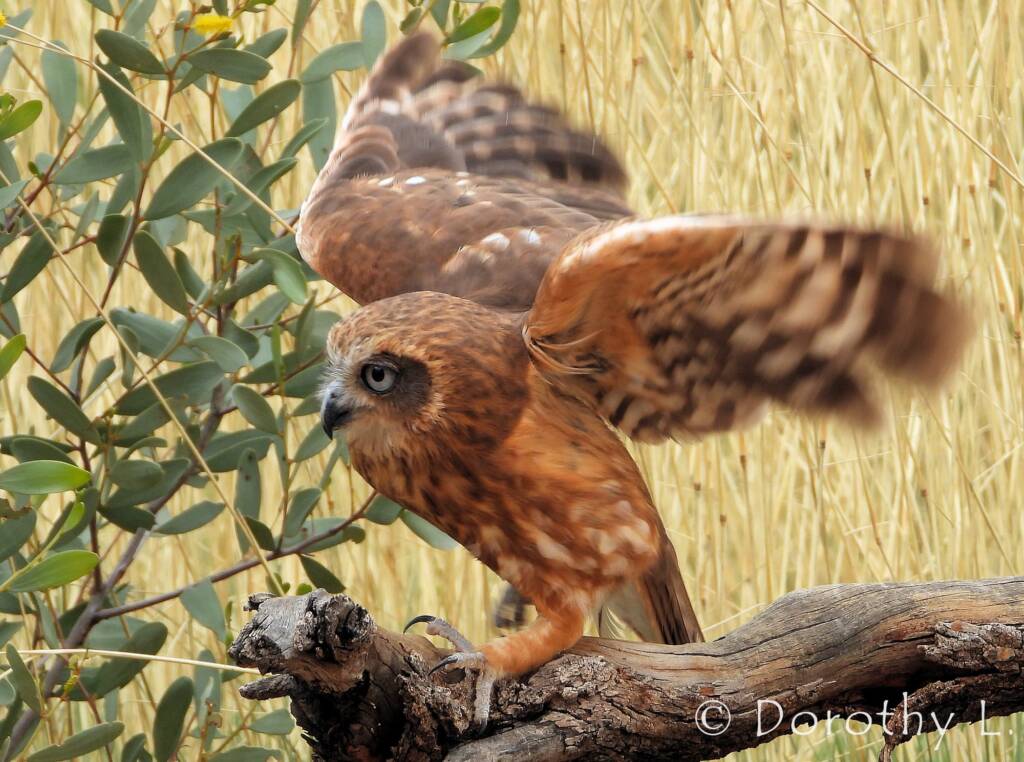
More information under Alice Springs Desert Park Australian Boobook and
Alice Springs Fauna > Birds in Alice Spring > Southern Boobook.
- Scientific classification
- Kingdom: Animalia
- Phylum: Chordata
- Subphylum: Vertebrata
- Informal: Gnathostomata
- Class: Aves
- Order: Strigiformes
- Family: Strigidae
- Genus: Ninox
- Subgenus: Ninox (Ninox)
- Species: Ninox novaeseelandiae
- Subspecies: Ninox novaeseelandiae infrasp. boobook
Footnote & References
- Australian boobook, https://en.wikipedia.org/wiki/Australian_boobook (last visited May 28, 2022)
RaptorsAustralian Boobook Owl Australian Hobby Barn Owl Black-breasted Buzzard Black Falcon Black Kite Black-shouldered Kite Brown Falcon Brown Goshawk Nankeen Kestrel Peregrine Falcon Spotted Harrier Wedge-tailed Eagle Whistling Kite

